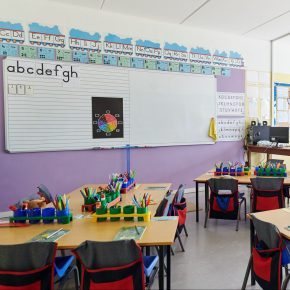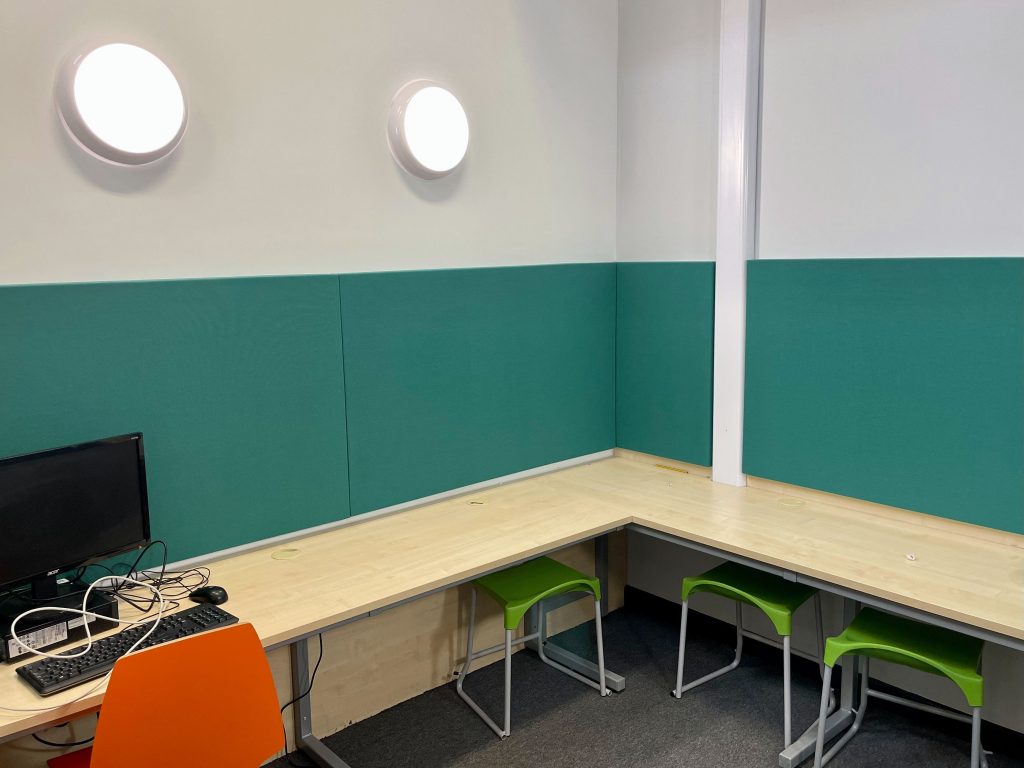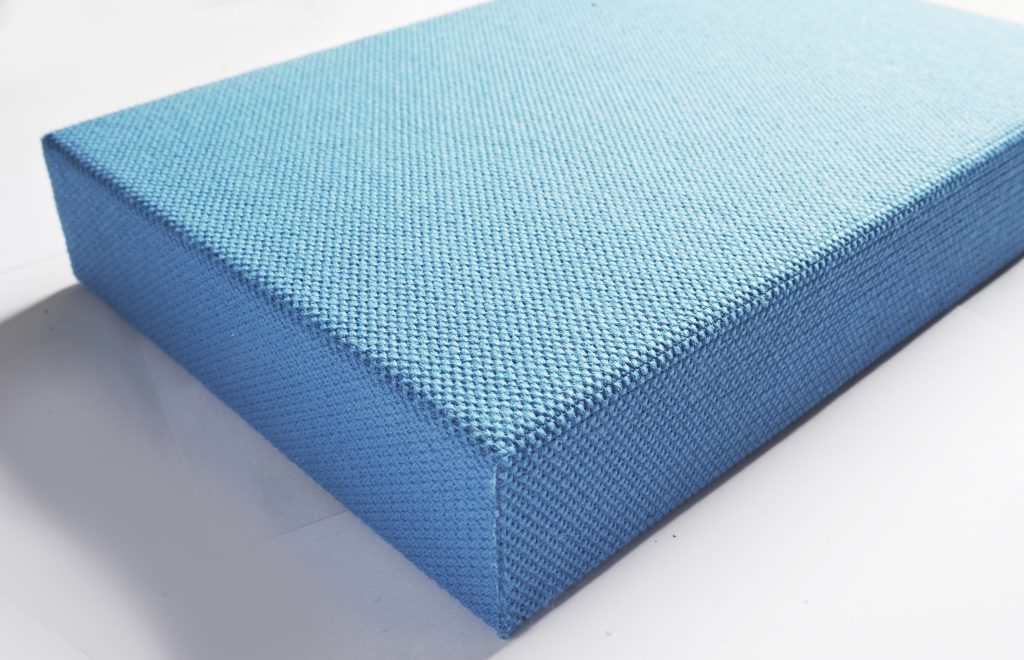
Hush: Why good acoustic design is key to meeting the needs of SEMH students
Good acoustic conditions within school classrooms are significantly important for maximising inclusivity in education, particularly for children with social, emotional, and mental health needs (SEMH), as Hush Acoustics explains here…
The evolution of schools over recent decades to ensure young people with special educational needs (SEN) and disabilities (SEND) are not excluded from mainstream schools, has driven transformational approaches to design and interior fit out. As our understanding of what we need to do to accommodate different conditions has increased, facilities, equipment and décor that would have been highly unusual within teaching environments only a few decades ago have become the norm, such as access ramps and wheelchair-friendly desks.
Children and young people with SEMH, however, may still be disadvantaged if their school environment is not optimised for acoustics. They will often have severe difficulties in managing their emotions and behaviour, which can result in them experiencing a wide range of social and emotional difficulties. For example, they may become withdrawn or isolated, or display challenging, disruptive, or disturbing behaviour.
Along with other young people with conditions which fall within the SEN category, particularly those with ASDs (autistic spectrum disorders), they can have a heightened sensitivity to sound. As a result, in excessively noisy environments, teachers and educational professionals may find it harder to effectively manage their behavioural needs and make the most positive contribution to their development.
Whilst it is acknowledged that more research is needed to understand the learning disadvantages that exist for children with SEMH, sensory processing disorder, researchers believe there is a link between noise sensitivity and auditory filtering and young adults with anxiety, attachment disorder and depression.
Adopt acoustic design best practice
One important part of a school’s SEN and SEMH strategy to maximise inclusivity should be the acoustic design of the teaching environment.

The materials used in the construction and décor of schools are chosen largely for their durability and low maintainability. As a result, the school environment is dominated by hard surfaces such as wooden floors, plastered walls and ceilings, hard plastics and, in some buildings, large windows and doors.
These hard materials cause reverberation and echo, resulting from too much of the sound generated through speaking and other everyday activities reflecting back into the room. This is one of the reasons why classrooms, sports hall, breakout rooms, communal areas and other spaces can be excessively noisy.
How to deal effectively with reverberation
The solution to reverberation involves introducing more sound absorption within the room, and one of the most effective and popular ways of doing this in educational settings is to install sound absorber panels. Products such as Hush Absorber 50, a Class A absorber that is constructed using a specially formulated 50mm thick acoustic foam covered in a high quality interior fabric, can be mounted with ease directly onto walls and ceilings, as well as suspended from ceilings in the form of rafts or baffles.

Hush Acoustics has provided reverberation solutions for numerous schools across the UK. These include a project to improve classroom acoustics to help meet the needs of an SEN student at Bird in Bush Primary School in South London and, in South Yorkshire, a project at Carr Lodge Academy to improve the acoustic comfort of newly created learning pods.
Where a new school building or extension project is being undertaken, or in more substantial refurbishment work, it is also important to consider the risk of reverberation at the design and construction phase and take necessary steps to mitigate it. In particular, ensure acoustic insulation, such as Hush Acoustic Infills, is fitted during the construction of metal roof decks to add sound absorption properties to the roof design.
So, what sort of benefits could be expected by reducing reverberation and echo in a classroom? Whilst evidence relating specifically to SEMH is not readily available, according to several studies involving students with ASDs, after installing sound absorbers their attention span tripled and their response time improved by 60%. Improved behavioural temperament was also reported.
Reducing nuisance external noise
Whilst reverberation is one of the most common acoustic issues that schools, colleges and universities face, noise from outside can also affect the quality of the teaching environment. Amongst these is ‘noise break in’ – this is a term used to describe noise which originates outside the building, with one common issue being the sound of rain falling onto a roof.
Where this particular issue is being experienced, it can be resolved by installing materials which will absorb impact sound. At one school construction project in Cheshire, Huntington Primary School, Hush 10kg Barrier Mat was installed in the roof of the new building to solve this problem.

Flat roofs can also be enhanced acoustically by adding a metal frame ceiling or suspended ceiling which features Hush FR Membrane. This product is manufactured using recycled rubber crumb bonded with polyurethane to offer excellent airborne and rain impact acoustic performance.
Noise may also enter the learning environment from adjoining rooms and corridors, and this can be reduced by upgrading the acoustic performance of separating walls, floors and ceilings. The best way to approach this is dependent on a number of factors, including the way the existing walls, floors and ceilings are constructed, the desired level of sound reduction and budget.
Hush Acoustics offers a wide variety of fully tested acoustic systems which can be applied in school buildings to cut sound transmission between rooms – see the range here.
For further advice on how to provide the right acoustic environment in any educational building, contact the Hush Acoustics team on 0114 551 8686 or email info@hushacoustics.co.uk.
Find out more about the Hush Acoustics range at www.hushacoustics.co.uk
Hush Acoustics Ltd
Unit 2, Tinsley Industrial Estate
Shepcote Way
Sheffield
South Yorkshire
S9 1TH
Tel: 0114 551 8685
Fax: 0151 944 1146
Visit Supplier's page
Latest news

30th April 2025
Digital Construction Week announces seminar programme for its landmark 10th edition
Digital Construction Week (DCW) returns to ExCeL London on 4 – 5 June 2025 with its most impactful programme yet. It brings together the best and brightest from across AECO, for two days of practical learning and idea sharing.
Posted in Articles, Building Industry Events, Building Industry News, Building Products & Structures, Building Services, Building Systems, Exhibitions and Conferences, Information Technology, news, Restoration & Refurbishment, Retrofit & Renovation, Seminars
29th April 2025
Senior pledges to ‘bee’ part of the solution with new biodiversity initiative
Senior Architectural Systems has installed its first on-site beehive, marking another step forward in its commitment to sustainability and biodiversity.
Posted in Articles, Building Industry News, Building Products & Structures, Building Services, Curtain Walling, Doors, Glass, Glazing, Innovations & New Products, news, Restoration & Refurbishment, Retrofit & Renovation, Sustainability & Energy Efficiency, Walls, Windows
29th April 2025
West Fraser range delivering key benefits for South-East carpentry company
An experienced carpenter and building site manager who has recently set up his own company is using high performance panel products from the West Fraser range.
Posted in Articles, Building Industry News, Building Products & Structures, Building Systems, Case Studies, Garden, Restoration & Refurbishment, Retrofit & Renovation, Sustainability & Energy Efficiency, Timber Buildings and Timber Products
29th April 2025
CPD Courses Available Online From Ecological Building Systems
Ecological Building Systems, a leading supplier of natural building products for sustainable construction, has revealed its comprehensive CPD programme for the year ahead.
Posted in Articles, Building Industry Events, Building Industry News, Building Products & Structures, Building Services, Continuing Professional Development (CPD's), Information Technology, Innovations & New Products, Insulation, Restoration & Refurbishment, Retrofit & Renovation, Seminars, Sustainability & Energy Efficiency, Training, Walls, Waste Management & Recycling
 Sign up:
Sign up: